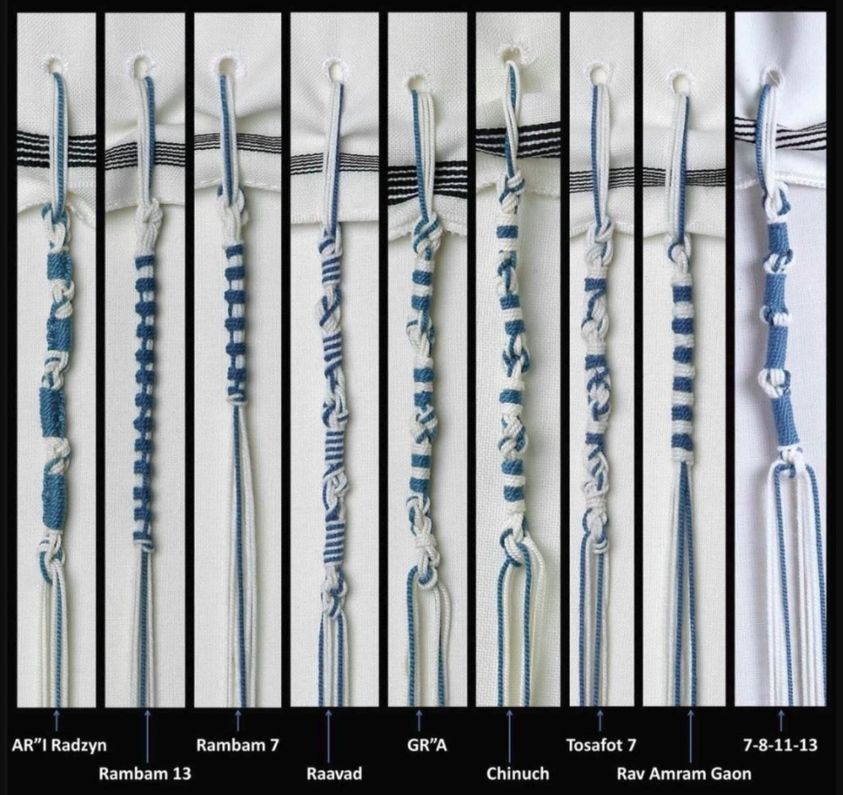Tzitzit (fringes)

I hear a lot of people asking about Tzitzit (fringes). . . Let’s talk about their purpose and answer the question, "Should we wear them?
"Tzitzit are fringes or tassels attached to Jewish prayer shawls called tallits and garments worn by observant Jewish men. Messianics often wear them as attachments to their shirts or pants belt loops.

Tzitzit come from a commandment in the Torah (Numbers 15:37-41) to remind people of God's commandments and to be holy to Him. The purpose can differ among Jewish traditions:
• Divine Command: Tzitzit are seen as a command from God, and wearing them is a religious duty to obey His teachings.
• Visual Reminder: They serve as a visual reminder to follow God's commandments and be mindful of one's actions.
• Jewish Identity: Tzitzit symbolize Jewish identity and unity, signifying one's belonging to the Jewish people and the covenant with God.
• Spiritual Focus: During prayer and meditation, tzitzit can help focus thoughts and intentions, strengthening the connection with God.
• Ethical Reminder: The blue cord (tekhelet) in some tzitzit represents ethical behavior and responsibility.
• Guarding Against Temptation: Tzitzit serve as a reminder to resist sinful temptations and distractions.
• Mystical Significance: In Kabbalistic traditions, tzitzit hold mystical meanings, connecting to the divine and spiritual realms.
What else could the Tzitzit mean?
In the New Testament, there's a story about a woman who had been suffering from continuous bleeding for twelve years. She heard about Yehoshua (Jesus), who was known for His miraculous healing abilities, and believed that touching the hem of His garment would heal her. When she touched His cloak, Yehoshua (Jesus) felt power leaving Him, and He asked who had touched Him. The woman came forward, admitted what she had done, and Jesus praised her faith, saying it had made her well.
This story is found in Matthew 9:20-22, Mark 5:25-34, and Luke 8:43-48, and it highlights the woman's faith in seeking healing and restoration by touching the hem of Yehoshua (Jesus)' garment. The reference to the hem of Yehoshua (Jesus)' garment has a connection to the Jewish tradition of tzitzit, which were fringes or tassels on the corners of garments, including Yehoshua (Jesus)' cloak. The event emphasizes the significance of faith and the belief in the healing power of Jesus.
What else?
God speaks through the prophet Zechariah about the future restoration and blessing of Jerusalem and the nations. God says:
"This is what the Lord Almighty says: 'In those days, ten people from all languages and nations will take firm hold of one Jew by the hem of his robe and say, "Let us go with you, because we have heard that God is with you." - Zechariah 8:23
This verse mentions a time when ten people from different nations will come to one Jewish person and say, "Let us go with you because we know that God is with you." This illustrates a desire to be associated with the Jewish people and their belief in God's presence among them. The imagery of holding onto the Jewish person's tzitzit (the hem of their robe) symbolizes a connection to the God of Israel and a shared spiritual bond.
So should we wear Tzitzit?
Yes! When when wear a 4 cornered garment. They help us to identify ourselves, to focus on Torah, to remember the Father Yehovah, to resist temptation… they can be conduits of the power of the Holy Spirit, that is, from Yehoshua to the people who need him most. And, in the "end times", they will help people to find their way to the Torah. We want all of this, so “Yes!” we should wear them.
Are non-Torah pursuant gentiles required to wear them?
"no!" But, since the only people asking about wearing them are probably the Torah Pursuant, if you are asking, you probably should be wearing them. I would encourage you to purify your heart and pursue righteousness. In this way, your living practices might match your spiritual desires.
By Wes Smith

Comments ()